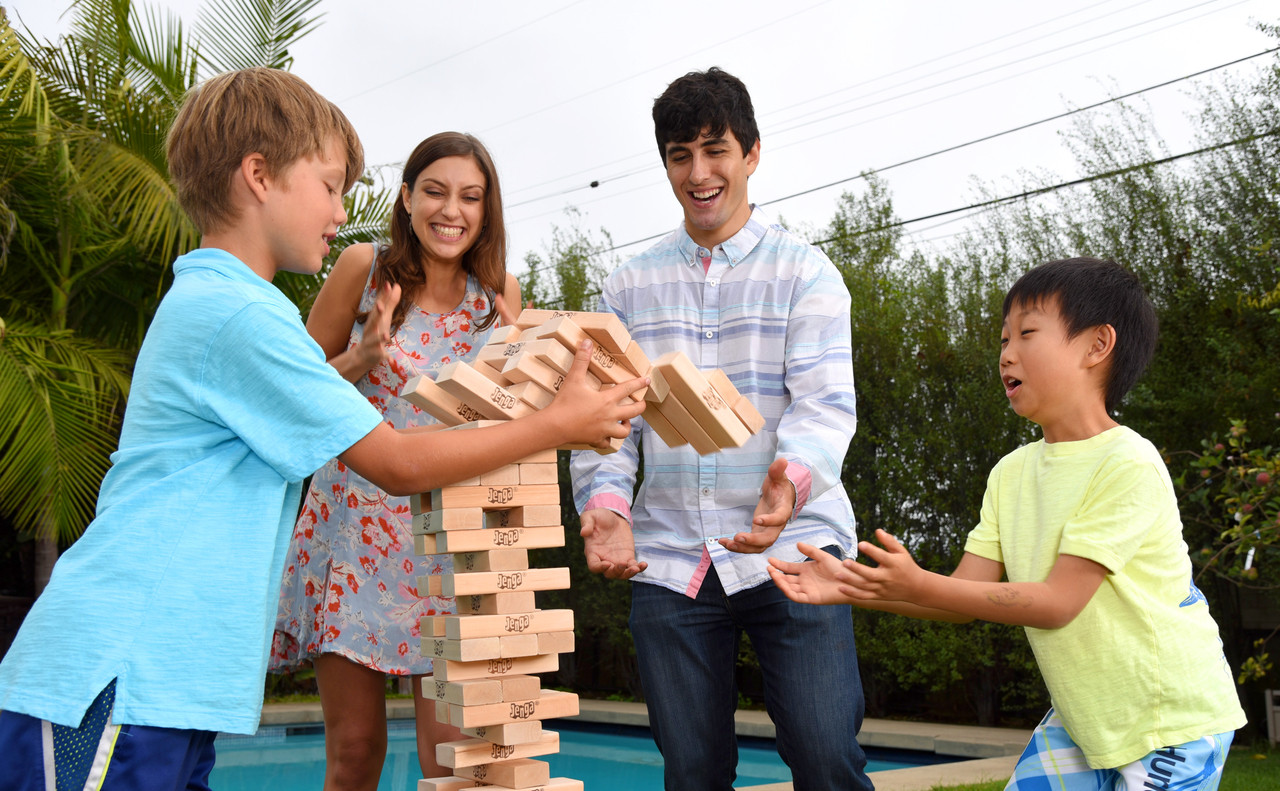 Loading... Please wait...
Loading... Please wait...- Home
- Best ideas for playing and customizing Jenga® GIANT™
- Jenga Giant AI
Jenga® GIANT™ and AI: Do you accept the challenge?
Posted by Jenga® GIANT™ on 12/01/2020

Your Jenga® GIANT™ game is a great party game filled with intrigue and fun. Every Jenga® GIANT™ game is slightly different from the next. This makes it even more challenging, since your tactics have to shift from game to game. Not only do you need to pay attention to what your opponent is doing, but you need to gauge each move carefully to avoid toppling the tower.
Several researchers at MIT have created a robot that learns while playing a Jenga® game. It has been provided with hierarchical learning models inspired by how humans gain experience. However, consider that when playing with your Jenga® GIANT™ game, you have to use several cognitive and neuromuscular skills. First, you have to categorize blocks based on their general behaviors. If a block does not move, you already know from experience that the block will not help you to progress at that moment, which limits your options temporarily. Later in the game, that block might be moved more easily. You also have to integrate visual and tactile stimuli by touching and observing the tower to make a decision regarding your next move. The MIT robot can play on its own, taking into account several of the skills mentioned above, however it can’t experience the fun and entertainment of human group play.
Discover four skills required to play with your Jenga® GIANT™ game that not even AI can match
Technology may be great at many things, but there is nothing like playing your Jenga® GIANT™ game with friends!
1. Spatial Perception and Jenga® GIANT™ game
Spatial perception consists of understanding the relationship between two objects when there is a change in their position in space. It helps us think in three dimensions, to visualize objects from different angles, and to anticipate changes. Your Jenga® GIANT™ game is constantly testing your spatial perception, because each time a block moves, the relationship with the other blocks shifts. Even though, through different algorithms, AI can scan the tower in 3D, understanding the spatial relationship between the blocks as a whole and anticipating its opponent’s moves takes training. AI has to run thousands of scenarios to be able to understand the spatial relationship of one movement. This cognitive skill takes a human seconds to calculate before making a move!
2. Estimation and the Jenga® GIANT™ game
Estimation is the cognitive skill that helps us predict or generate a response when there is no obvious solution. As children, we are constantly training this cognitive skill by role-playing and playing sports. Even as adults, we continue to train this cognitive skill. When playing the Jenga® GIANT™ game, you may have to change your tactics as you go, since each move from your opponent might affect your approach. In order to change your strategy, you need to estimate how your actions of moving a block might change the desired effect. Humans tend to do this in minutes, since we have been training in this skill from birth. AI has to learn this in order to be able to switch strategies mid-game. It has to play thousands of times and still might not develop rapidly enough to enable a change in tactics to keep the tower from crashing down!
3. Neuromuscular reflexes and the Jenga® GIANT™ game
As we mentioned before, estimation allows us to change our game plan. However, in order to perform that change, we rely on our neuromuscular reflexes. A neuromuscular reflex is an involuntary movement in response to a stimulus. It is an automatic response to a stimulus that does not need conscious thought. Playing with your Jenga® GIANT™ game with family and friends helps each person develop their neuromuscular reflexes. These help one to get out of the way when the tower is about to topple or to take one’s hand off the block when the tower starts swaying. AI is still not able to develop something similar to reflexes. As it is based on machine learning, AI must approximate something similar to it, since reflexes aren’t something learned consciously, because they are directly linked to human neurons and muscles. Reflexes deliver tactile cues to our brain that allow for our bodies to react in a split-second without having to make a conscious decision. These reflexes can’t be matched by AI when playing the Jenga® GIANT™ game.
4. Group fun and the Jenga® GIANT™ game
Playing with your Jenga® GIANT™ game brings family and friends together to build memories and create special moments between us. The beauty of the Jenga® GIANT™ game is its capacity to entertain and bring people of all ages closer together. As much as AI discoveries and advances are important for the future, they can never match a loved one’s surprise or smile or the thrill of taking a block off a very high tower that wobbles but doesn’t crash. Without a doubt, there is one thing AI can’t match and that’s the enjoyment and excitement we get while playing!
Take any chance you get to gather your family and friends to play with your Jenga® GIANT™ game. Keep sharing and developing those cognitive skills that no robot or AI can match!
Become a Jenga® GIANT™ game master, and not even AI can beat your skills. Let the fun begin! Discover our giant Jenga® games at jengagiant.com. Invite your friends and family, and challenge them to play Jenga® GIANT™!
